“Part of the popularity of the whole flying saucer mystique is, in my opinion, the ease with which the extraterrestrials can be looked upon as a new scientific version of angels.”
-Isaac Asimov
Part 1
Another viewpoint addressing the intersection of Christianity and flying saucers comes from a controversial Catholic sect known as the Most Holy Family Monastery. The religious organization is a sedevacantist branch that rejects the current Pope and believes the modern iteration of the Catholic Church is fraudulent. They also profess other radical views that have earned them the reputation as an extremist group. Despite operating on the fringes of their denomination, the Family is in sync with a majority of Christians on the theological implications of UFOs.
Their contribution to the topic, UFOs: Demonic Activity & Elaborate Hoaxes Meant to Deceive Mankind, turned out to be a surprisingly comprehensive review of many well-known UFO events from the last century. The 54-page tract written by Brother Michael Dimond is little more than a pamphlet with a glossy cover, but the author uses the limited space to dive deeply into the subject matter and its religious implications.
The work’s overall message is familiar. Dimond agrees that a number of reported UFOs have no rational explanation, perform impossible maneuvers, and generally thumb their noses at the established laws of physics. They show up in photographs when they feel like it, “change size or shape in front of people;” “instantly appear and disappear;” and display the ability to “pass through physical objects.” These behaviors lead him to conclude that UFOs are a “spiritual phenomenon” and not part of the physical world.
Instead of quoting chapter and verse from the Bible to make his case, Dimond tailors his message to the ‘UFO crowd.’ He cites the work of scientists like Einstein and Fermi, along with the likes of paranormal investigators Linda Moulton Howe and Colm Kelleher. The book’s bibliography suggests an impressive shelf of UFO-related texts at the Family’s disposal, and Dimond lists hundreds of citations containing classic material. He starts by citing Flying Saucer Review’s editor—Gordon Creighton—a prominent UFO investigator and author who doubted the interstellar nature of extraterrestrials: “There seems to be no evidence yet that any of these craft or beings originate from outer space … The great bulk of these phenomena are what is called satanic.”
Dimond goes on to quote from a trinity of important UFO researchers to support his conclusion that anomalous aerial vehicles aren’t tangible ‘nuts-and-bolts’ craft. He draws from the work of Jacques Vallée, J. Allen Hynek, and John Keel—explaining how each one evolved their answers to the UFO question over time—eventually gravitating toward interdimensional theories instead of aliens from another planet.
Vallée came to reject the extraterrestrial hypothesis after decades of data-driven research. He entertained the idea of extra-dimensional malevolent “trickster” entities as the progenitors of UFOs, writing in Messengers of Deception (2008) that the mysterious visitors were “helping to create a new form of belief … realization of that age-old dream: salvation from above.” This depiction is exactly why some Christian faith systems believe that UFOs are harbingers of Christ’s return. Alien saviors arriving with a new religion sounds a lot like various warnings found in the Bible about the end of days: “In the latter times some shall depart from the faith, giving heed to seducing spirits and doctrines of devils” (1 Tim 4:1).
UFO investigator John Keel was also skeptical about the concrete nature of UFOs, calling them “transmogrifications of energy” and “not permanent constructions of matter.” After identifying other instances of supernatural high strangeness occurring alongside UFO sightings, he came to suspect that witnesses weren’t observing spaceships from another galaxy. Keel felt that an extra-dimensional presence was responsible, speculating that modern encounters might be “minor variations of the age-old demonological phenomenon.”
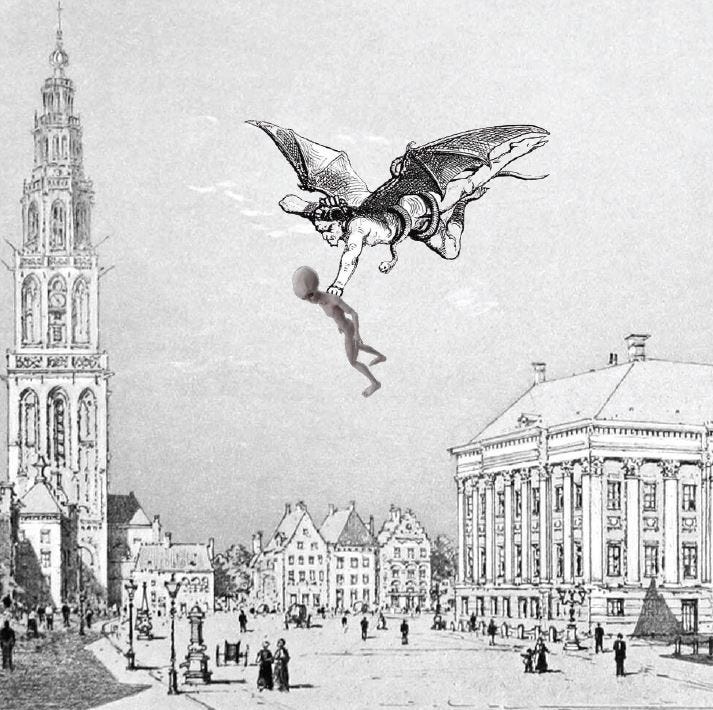
Some Christian scholars argue that the grey beings associated with UFOs are just Lucifer’s attempt to create life.Dr. J. Allen Hynek expressed similar beliefs about the reality of unidentified flying objects after spending years running down UFO reports for the U.S. Air Force’s Project Blue Book. He concluded that there was an unknown force contributing to the confusion: “It seems clear to most of us that UFOs don’t obey the rules of the present day scientific game … All these things seem to call for a Para physics, a metaphysics, of a transcendental physics.”
Dimond also puts forth unique connections between common UFO experiences and the biblical Satan. He compares abduction scars to “the mark of the beast,” a symbol that the Bible claims will be given to nonbelievers in the end-times. He also points out how ‘Reptilian ETs’ are reminiscent of the devil’s serpent form. He later compares “the Grays” to demonic entities, noting how both are reputed to emit a foul odor. Dimond includes Whitley Strieber’s depiction of the beings from his book, Communion, emphasizing how Strieber “wrestled with the idea that his communion was with demonic entities rather than ET’s.” Unsurprisingly to Dimond, Strieber claimed ‘the grays’ also smelled bad—“like sulfur.” (Bigfoot allegedly stinks too, but that’s another pamphlet.)
Rather than classify every abduction or close encounter as evidence of a cosmic battle between good and evil, the author portrays a large number of UFO sightings as misidentified natural objects or human inspired hoaxes. A substantial portion of his treatise is devoted to a thorough debunking of the 1975 Travis Walton abduction case. He spends 11 of the book’s 54-pages deconstructing Walton’s narrative of being captured by aliens in front of witnesses. Unlike author D.M. Pottenger—who believed that Walton was taken by demonic entities posing as aliens—Dimond exposes the event as a lie contrived for money.
The ‘Roswell UFO crash’ is likewise dismissed as nothing more than a weather balloon that went down in the desert. Dimond peppers his retelling with damaging quotes from Air Force investigator Jesse Marcel, one of the first people to handle wreckage recovered from the crashed object, who told the Fort Worth Star-Telegram that he had mostly collected “patches of tinfoil and rubber” while scouring the area for a “weather device.” Dimond blames Roswell’s pop-culture appeal on “ET believer Stanton Friedman,” claiming if Friedman hadn’t interviewed Marcel 30 years after-the-fact, the public would never have known about the incident at Roswell.
Cattle mutilations, MJ-12, Nazca lines, Area 51, alien autopsies, crop circles—they’re all con-jobs or purposeful misinterpretations according to Brother Dimond. Even though he assigns terrestrial causes to purported paranormal incidents and rejects a majority of sightings as earth-bound or man-made hoaxes, the author comes around to the same conclusion as many other Christian writers: UFOs are “false apparitions produced by Satan.”
Lights in the Sky brings together three Christian authors with credentials in disciplines suitable for a wholistic examination of the UFO topic. The writers use their expertise in astronomy, philosophy, theology, and political science to build a collective case against the possibility of intelligent alien life ever arriving on Earth. They instead reveal how true ‘UFO experiences’ are driven by “supernatural creatures of malevolent nature.”
The book’s thesis follows a recognizable formula. After going through the usual process of elimination to rule out the possibility of interstellar vehicles (the nearest galaxy is still too far away, the technology doesn’t exist to reach Earth, the physics won’t work, intelligent life is extremely rare, etc.), the authors are left with a handful of UFO cases that remain unexplained—these are called residual UFOs (RUFOs). RUFOs exhibit “non physical” attributes, but are “real” to their observers. At times they demonstrate a “strategic purpose,” but usually their behavior serves to “deceive their human contacts.” These actions point the authors to one culprit: “RUFOs … must be associated with the activities of demons.”
When considering the deceptive nature of RUFO sightings, astronomer and contributor Dr. Hugh Ross contends that God wouldn’t send forth strange lights in the sky without a saintly purpose. Ross explains: “If they are from God … their impact will reflect God’s revealed character and values.” Since RUFOs have been known to cause bodily and psychological harm, he insists that they can’t be heavenly manifestations. This dogma contributes to the Christian view of UFOs as a malignant spiritual force—they don’t emulate God’s principles, so they must originate with the devil. In this way, the book’s authors condemn the UFO phenomenon as a “deception;” an honest-to-God hoax perpetrated by “superhuman authors.”
What about the possibility that UFOs or ETs are angelic beings? The authors of Lights in the Sky dismiss this prospect. They argue that biblical angels were sent to promote “worship and attention toward God rather than away from him.” This is hardly the case with contemporary ET encounters—rarely does an alien experiencer return with copies of the New Testament.
Not all Christians see aliens as demons by default. Famous televangelist Billy Graham didn’t rule out the possibility that God created intelligent alien life elsewhere in the universe. While conceding that the Bible didn’t weigh-in on the issue, he speculated that if they did exist, “God created them and watches over them, just as He created us and watches over us.” Graham went on to say that if their extraterrestrial souls needed saving, “no doubt God will provide the means for their salvation — just as He did for us by sending His Son from heaven to become the final and complete sacrifice for our sins.”
The late preacher raises a good point. What if God did create intelligent life on other planets? Would Christians accept Jesus dying multiple times on different alien worlds to redeem other races? If they began existence as man did on Earth—without sin—maybe another species would be able to resist Satan’s temptation. Perhaps they wouldn’t attract the devil’s attention in the first place. Salvation might not be required for a population of pious ETs.
Dominican theologian Tomasso Campanella speculated along these lines in 1622, writing that beings living on other planets “would not be infected by the sin of Adam since they are not his descendants.” By Campanella’s logic, “they would not be in need of redemption, unless they suffered from another sin.”
UFOs have demanded the public’s attention, and as a result, congregations have sought answers from their religious leaders. Some believe that the mysterious objects in our skies are sent by the devil—others see them as proof of an expansive and wondrous creation—in the end, most agree that the phenomenon is evidence of God’s existence.


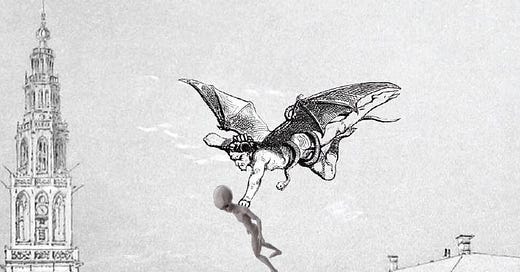




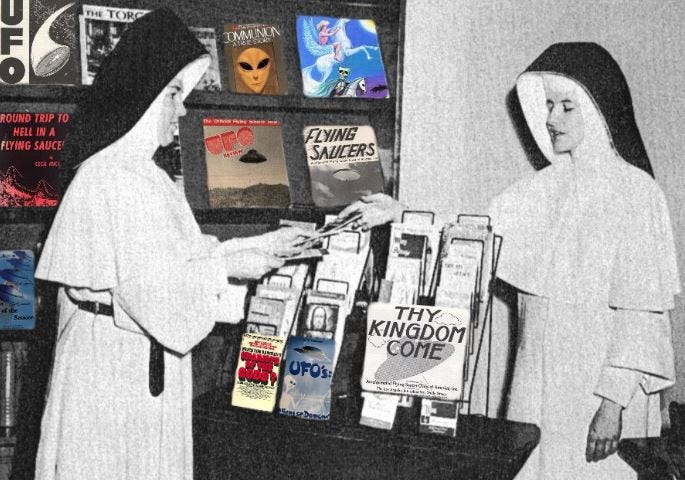

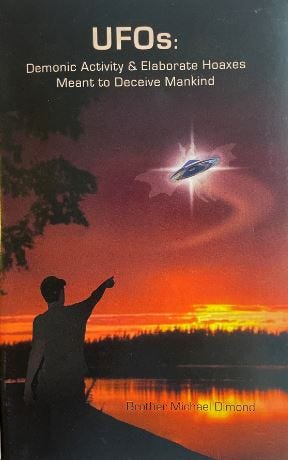




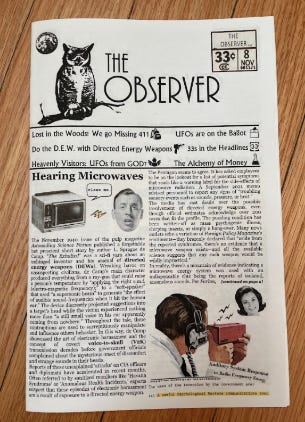

Excellent survey of a lot of material that I was previously unaware of. Thank you.